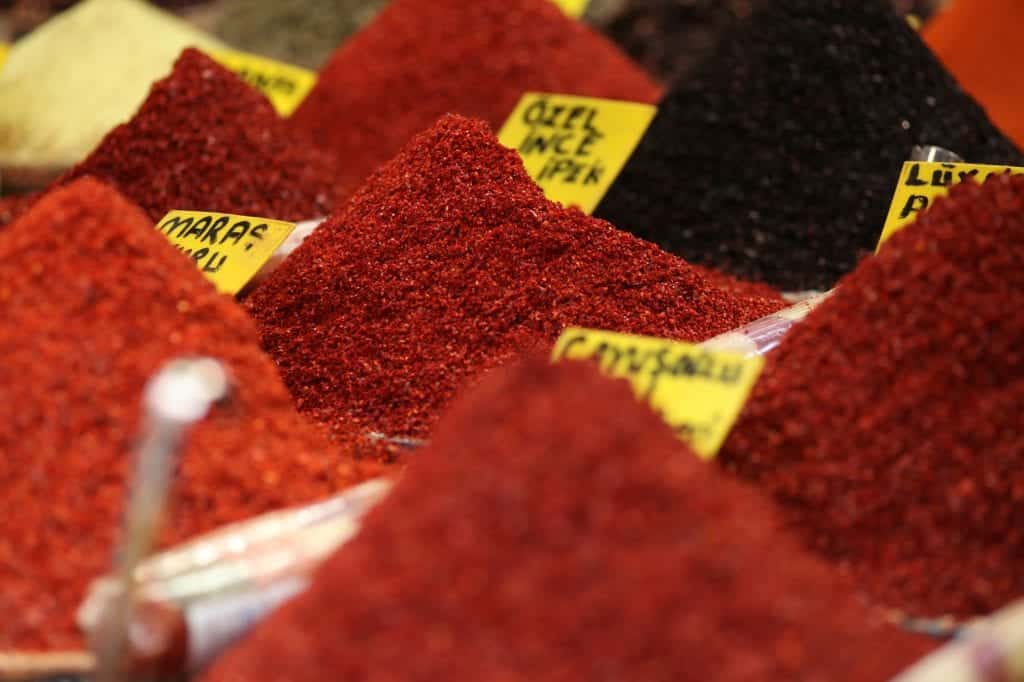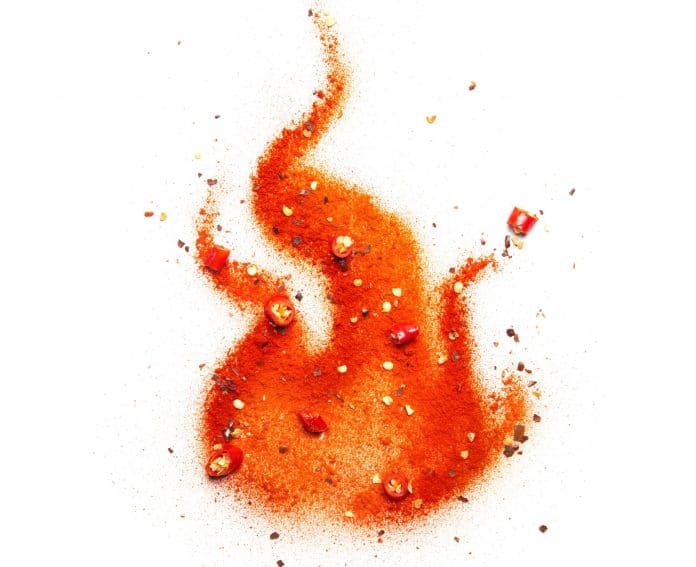Seed breeders help fuel hot pepper trend.
Look at a menu or the grocery store shelves, and it doesn’t take long to see the growing influence of hot peppers. Demand for food spice and heat has been rising for the last decade.
More consumers are looking for non-traditional tastes and taste combinations from around the world. Today’s more food-educated consumers don’t just ask for mild or hot flavors, they know and request specific peppers. And as regional cuisines become even more globalized, preference for foods that incorporate heat is expected to continue to increase significantly.
“There is a surge in the demand of hotter and higher color value peppers from pharmaceuticals, food and condiments processing industries,” says Tyler Eckard, PhD, head of Solanaceae Breeding, Americas for Bayer. “Hot peppers enhance heat, pungency, warmth and bite and color of prepared foods. Different flavors are required to meet taste demands of a broad demographic.”
Given the great diversity and variability of hot pepper types, consumers are also increasingly requesting them in various ways, including fresh, processed and stuffed, adds Salvador Hurtado, hot pepper, melon and Latin America senior product manager for Sakata America.
That opens more doors for seed producers. “Developing the same type of pepper for different markets provides opportunity to be more detailed in our search for the next market-leading variety,” he says. “Chefs are incorporating new ways of adding heat to their plates. You find salsas or at least hot sauce pretty much in every restaurant. Pizza parlors are adding jalapeños as a topping, and who doesn’t throw some heat in homemade chili sauce or salad dressing?”
Picking a Peck of Pepper Hybrids
With so much promise in the market, hot pepper seed breeders are focused on not only different pepper consumers and markets, but also on increasing yield and expanding production.
Bayer Vegetable Seeds breeders are developing hot pepper germplasm and hybrids for the Mexican, North American, Mediterranean and Asian markets. Growers and processors seek yield, synchronized maturity, field holding capacity, flavor and processing line adaptability.
“We have a long-standing history with hot pepper breeding that goes back to 1958 under the Hungnong brand, focused on breeding for Asia. Bayer was first to introduce jalapeño pepper hybrids in the early 1990s for the Mexican and North American markets, and now we have high-performing hybrids for many of the hot pepper types consumed around the world,” says Eckard.
Sakata America also has been breeding in the hot pepper segment since the early 1990s.
“Sakata America became a market leader first in the ancho and jalapeño segments by improving yield, size and disease resistance to deliver on grower needs. We had great success with the El Jefe and Caballero varieties during the early hybrid phase of the business,” says Hurtado. “Sakata continues to lead in the ancho and guajillo markets and has now diversified its line into the anaheim, serrano, habanero and specialty pepper segments.”
Hot pepper seed breeders stress it is critical to keep pace with the rising consumption trend. And so far, they have. Eckard says yields have increased from 20 tons per hectare in 1993 to 80 tons in 2020. He notes hot pepper production is becoming a year-round crop in key areas as well.
“Through genetic improvement for agronomic traits and adaptability to diverse environments, producers are able to grow hot peppers all year round in Mexico now,” he says. “For example, ancho peppers used to grow in Guanajuato and Zacatecas states during summer only, but today anchos are produced in Michoacan, San Luis Potosi and Jalisco states in the fall and in Sinaloa during winter. Production areas and seasons overlap, allowing for year-round supply.”
Hurtado concurs. “Thankfully, there are many regions in the world that produce or have climates that allow for hot pepper production today,” he says. “We strategically place those productions to meet our needs and allow us to provide our growers with the best quality seed. Our job is to ensure growers that our varieties are versatile and can work for most of their needs.”

Perfecting Pepper Pungency
In addition to increasing production, plant breeders focus on fruit size and quality, disease resistance and pungency with pungency being a priority trait for hot pepper breeders.
Different pepper types have varying degrees of pungency, which is measured in Scoville Heat Units (SHUs). In recent years, some breeders have been pushing SHUs higher and higher.
“There are different preferences on the market; some people prefer high pungency and others low pungency. On serrano peppers, for instance, the preference is high pungency but on ancho peppers the preference has shifted to low and mid pungency as new hybrids were derived from crosses with sweet peppers to get larger size fruits,” says Eckard.
Whether for different types of hot peppers, including jalapenos for both fresh and processing markets, ancho, serrano and Asian peppers, Bayer Vegetable Seeds’ breeding process starts by defining product concept, breeding roadmaps and parental lines to develop new germplasm.
“Our breeding programs leverage superior germplasms, cutting-edge technology applied to genotyping and trait integration, and an extensive testing and trialing network,” he says. “Every year, hundreds of new candidate hybrids are tested in pre-commercial trials across the most important environments. Only those that meet agronomic performance and fruit quality attributes across years and locations advance to the next testing phase and potential commercial launch.”
At Sakata, breeding happens in parallel with development of molecular markers and help from pathologists and scientists. Disease resistance, among other agronomic attributes, is critical.
“As diseases and pests create more challenges for growers, improving hot pepper varieties begins with a search for sources of resistance,” says Hurtado. “Typically, resistances are found in hot peppers considered non-domesticated. While those types of peppers may have great resistance, they might lack desirable agronomic attributes, so our cross-breeding work begins.”
Future Pepper Potential Prospects
As hot pepper seed breeders look to the future, they are optimistic. Some challenges do exist.
“It is our job as a seed supplier to follow the trends and provide growers with varieties that provide a high yield to make it profitable, which can be easier said than done,” says Hurtado.
Eckard notes that in Asia, the main growers are small holders, where the primary focus is about securing yield and ensuring adaptability and flexibility to diverse cropping conditions. Mexico and North America are different. The main growers are large companies that face labor shortages and drive the seed industry to develop new high-yielding hybrids amenable to automation.
“The processing segment has witnessed growth and will continue growing with diversified industrial uses of hot pepper components like capsaicin used in pain balms and nutraceuticals and carotenoids used in natural food color, cosmetics and antioxidant supplements,” he says.
“This has been a remarkable increase in non-traditional pepper consumers, increasing the demand in use of hot peppers multifold, in non-traditional geographies.”
Future breeding will also need to focus on conventional traits, such as ease of drying, with an eye on sustainability. “We have to produce more on less land and with a more sustainable approach which is triggering shifts from open field to protected environment,” says Eckard. “This translates into breeding hybrids with longer production cycles and more yield per square meter.”
Continued changes in consumer pepper preference and geographies also are likely into the next decade. “Countries you would never think of are now importing hot peppers,” says Hurtado. “People will keep chasing the dragon of heat units, and we will keep pushing the limit.”













